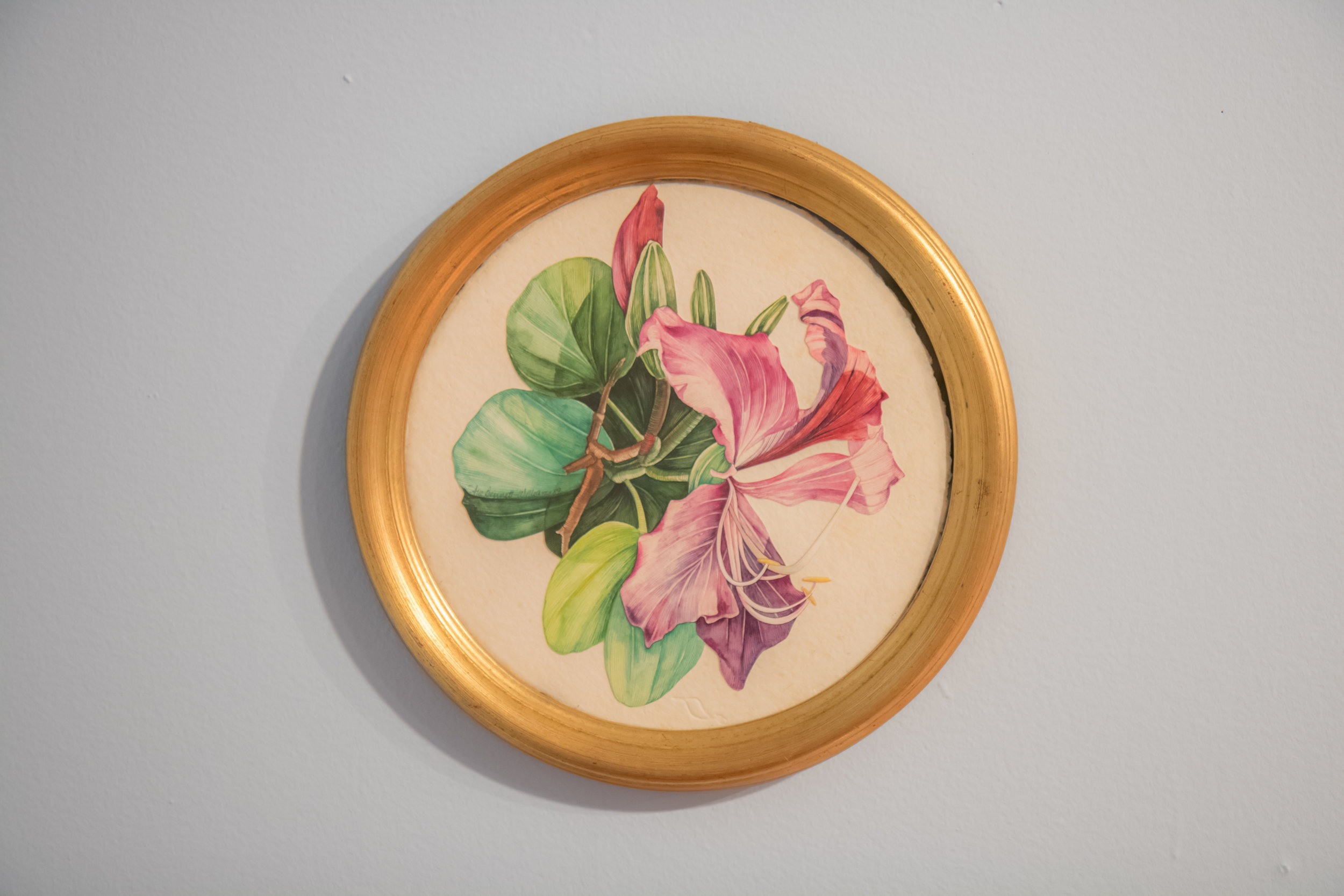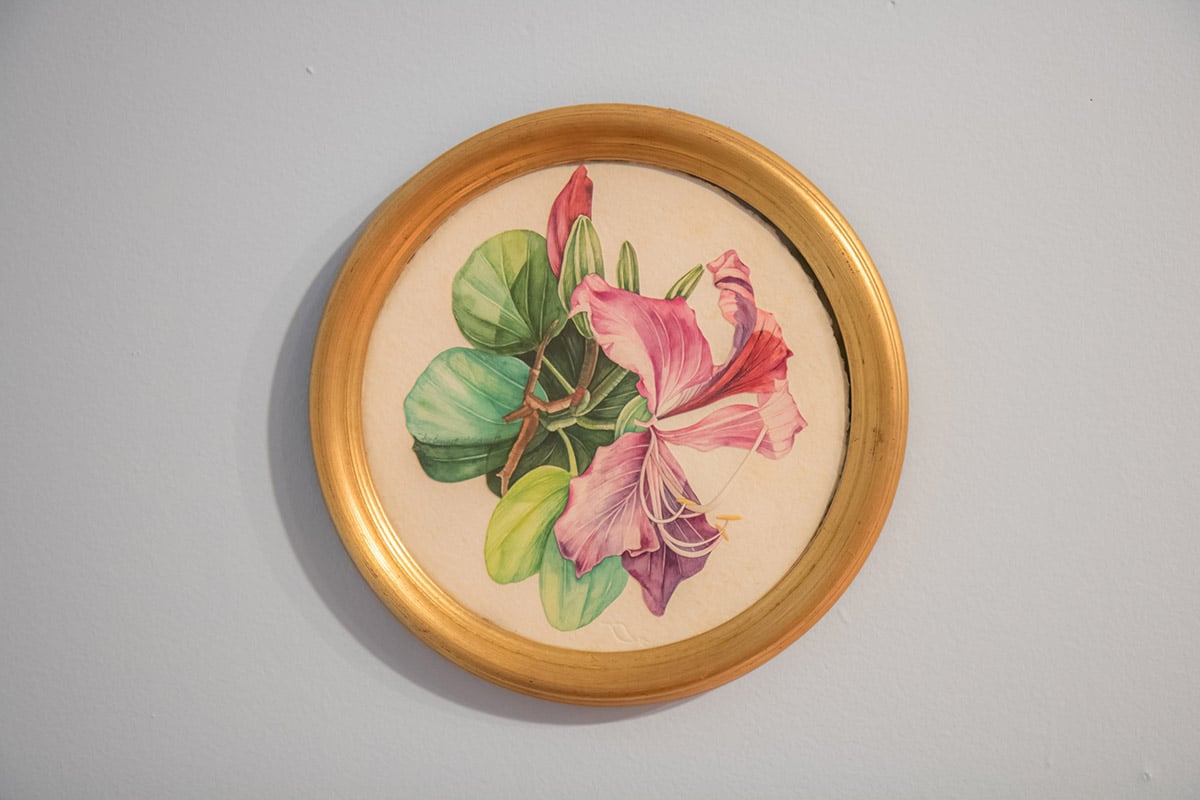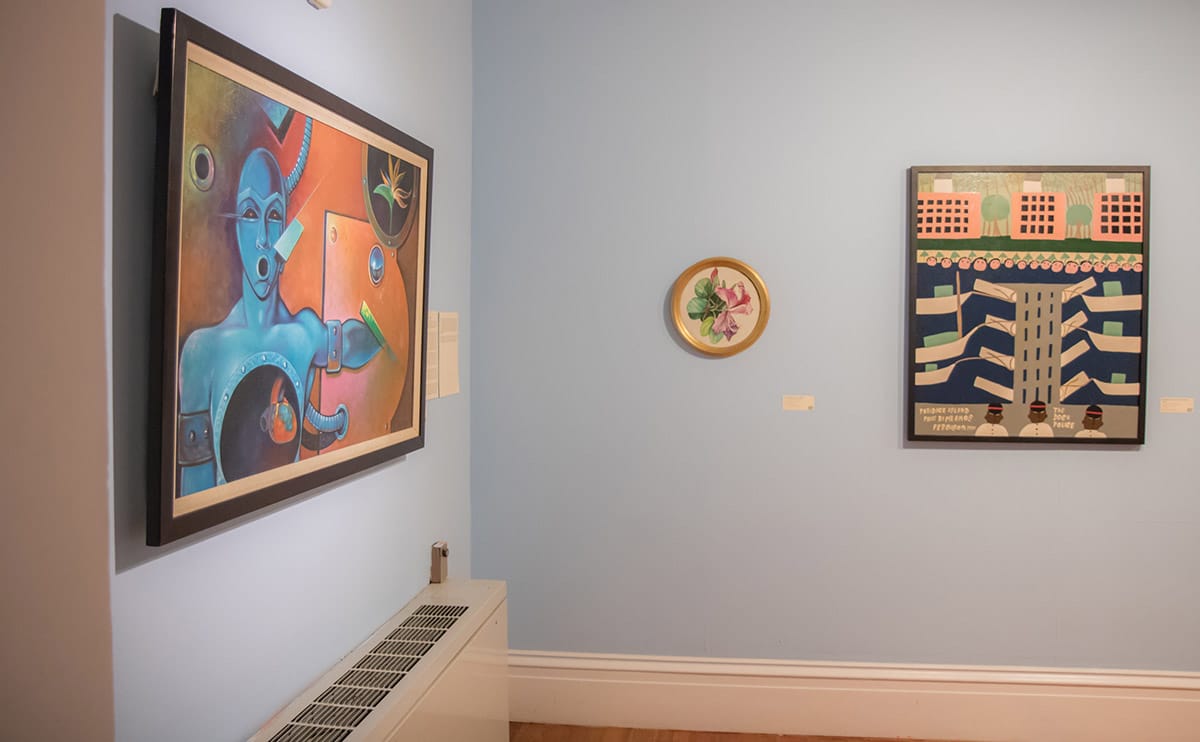From the Collection: “Poor Man’s Orchid” (1989) by Sue Bennett-Williams

a portal into the practice of a dedicated educator
By Natalie Willis
The 19th Century marked a period in Britain known as Orchidelirium. Not entirely unlike the Dutch tulip fever, this flower-frenzy was a mad scramble for the exotic, elusive orchid. They became connotative as a symbol of wealth, prestige and knowledge, of the affluence required to secure these items from far-off lands. Sue Bennett Williams’ “Poor Man’s Orchid” (1989) is no such thing and no less beautiful.
Sue Bennett-Williams, an American transplant who has made The Bahamas her home for quite some time now, is a formidable educator and creative who has rooted herself firmly in the foundations of Bahamian art. From teaching generations of tender young creatives from primary school to her time at the University of The Bahamas as a lecturer in the Fine Art department, her care and notorious ability to not-mince-words is the stuff of legends, and of rather amusing tales from the equally tender egos of freshman Fine Arts degree students.

“Poor Man’s Orchid” (1989) Sue Bennett Williams, watercolour on paper, 11 inches diameter. The Dawn Davies Collection.
Poor Man’s Orchid goes by many other names. Bennett-Williams, an avid hiker and enthusiast of natural beauty – as is evidenced in her lengthy practice of depictions of the Bahamian landscape (both natural and social) – has given us a quiet, quirky gem for consideration in the Dawn Davies Collection. The circular frame itself gives us a porthole to peep through into her rich and varied practice, and its situation alongside Jolyon Smith’s “Transformation” (1987) seems apt with its own flower-porthole, they fit together rather easily, as Williams’ dedication to creative education in the country has seen her carve out a space of authenticity and care in the community.
To be nice is one thing, but true kindness requires a deeper and more difficult kind of love. With stories from students of their work being ruthlessly taken down by her white paintbrush because it’s not-quite-right, it might seem harsh, but art practice requires a lack of preciousness and a love of bold exploration that is often not taught in schools – though it is in her classroom.
Mountain Ebony, Poor Man’s Orchid, Orchid Tree, Camel’s Foot, the number of names this plant goes by, speaks not only to the wide geography of its dispersion, and its readiness to adapt to its landscape (perhaps even to Williams’ own penchant for discovery and exploration), but also to the way that plants have consistently held the power to captivate and intrigue us the world over and through time. Be it medicine, beauty, agriculture, or decoration, “Poor Man’s Orchid” (1989) feeds into the long history of botanical illustrations, still life studies, and landscape artwork of the planet as a whole.

Installation view of “Poor Man’s Orchid” (1989) by Sue Bennett Williams
Ancient Egypt, Greece and Rome, and the Indian region all hold their own (almost unimaginably) long histories of the depiction of plants and their uses. From medicine to ritual, or both in the case of Indian Ayurvedic medicine, the history of botany has always been held as science and spirit as amalgam rather than the strict science we understand it to be today. Bennett-Williams’ watercolour, while holding references to the still lifes and watercolour images of the colonial era in particular, also harkens to the scientific exploration with its collaged quality – carefully cut out and placed on backing under the glass as a specimen for display and consideration.
But the references to colonial watercolours of affluent ladies or gentleman explorers (we all know the very gendered history there) is also up for consideration in Bennett-Williams’ work. This tenderly rendered work is adamantly described as the “Poor Man’s Orchid”, relating to the accessibility (or lack thereof) that underpins the modern history of this particular art (or science). She is part of the Bahamian expatriate artist history but also in firmly rooting herself here within the community she is against much of what that history implies. The lack of access is done away with, in her educational practice, feeding into this place that has also fed into her for her life here. Symbiosis is the name of the game, and the love for Bennett-Williams throughout the community is a testament to that.

Installation view of “Poor Man’s Orchid” (1989) by Sue Bennett Williams
This work, and others in the National Collection and the Dawn Davies Collection is currently on view as part of the new rehang of the Permanent Exhibition “Timelines: 1950-2007” curated by NAGB Assistant Curator Richardo Barrett. The exhibition remains on view through mid-2020.